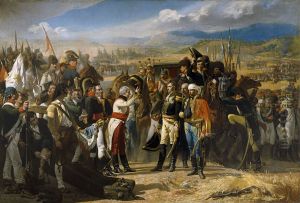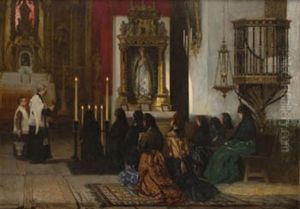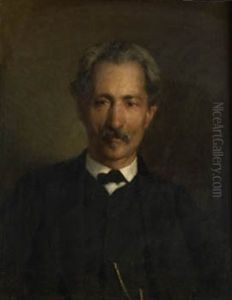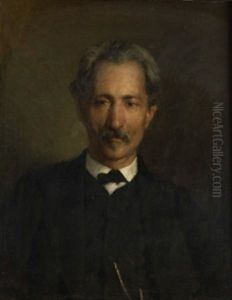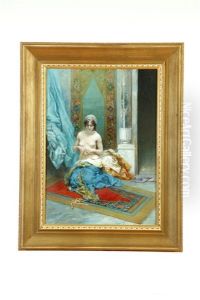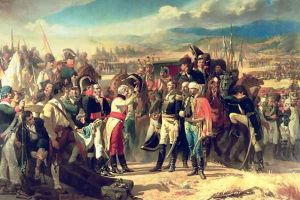Jose Casado del Alisal Paintings
José Casado del Alisal was a prominent Spanish painter born on October 18, 1832, in Villada, a small town in the province of Palencia, Castile and León, Spain. He is best known for his historical and portrait paintings, which were particularly influential during the 19th century.
Casado del Alisal started his artistic training at the School of Fine Arts of San Fernando in Madrid. His talent was evident early on, and he received a scholarship to continue his studies in Rome, which at that time was a central hub for artists wishing to study the classical arts and the Renaissance masters. During his time in Italy, Casado del Alisal absorbed the influences of Italian art, which would later be reflected in his own work.
Upon returning to Spain, he established himself as a leading painter in the Romantic style. He became famous for his ability to capture the essence of historical moments through his art. One of his most celebrated works is 'The Surrender of Bailén,' which depicts a significant Spanish victory during the Peninsular War. This painting won him the Medal of Honor at the National Exhibition in 1864 and is considered one of his masterpieces.
Throughout his career, Casado del Alisal also gained recognition as a portraitist, capturing the likenesses of many important figures of his time. He was appointed as a court painter, and his works were sought after by the Spanish aristocracy and intellectuals.
In addition to his painting, Casado del Alisal played a key role in the Spanish art scene as one of the founders of the Spanish Academy of Fine Arts in Rome. His influence extended beyond his own works as he contributed to the training and development of the next generation of Spanish artists.
José Casado del Alisal passed away on October 8, 1886, in Madrid. His legacy is preserved through his contributions to Spanish art, particularly in the genre of historical painting, and his works continue to be admired for their technical skill and emotional depth. His paintings reside in various collections, including the Museo del Prado in Madrid, and continue to be studied and appreciated for their historical significance and artistic merit.

